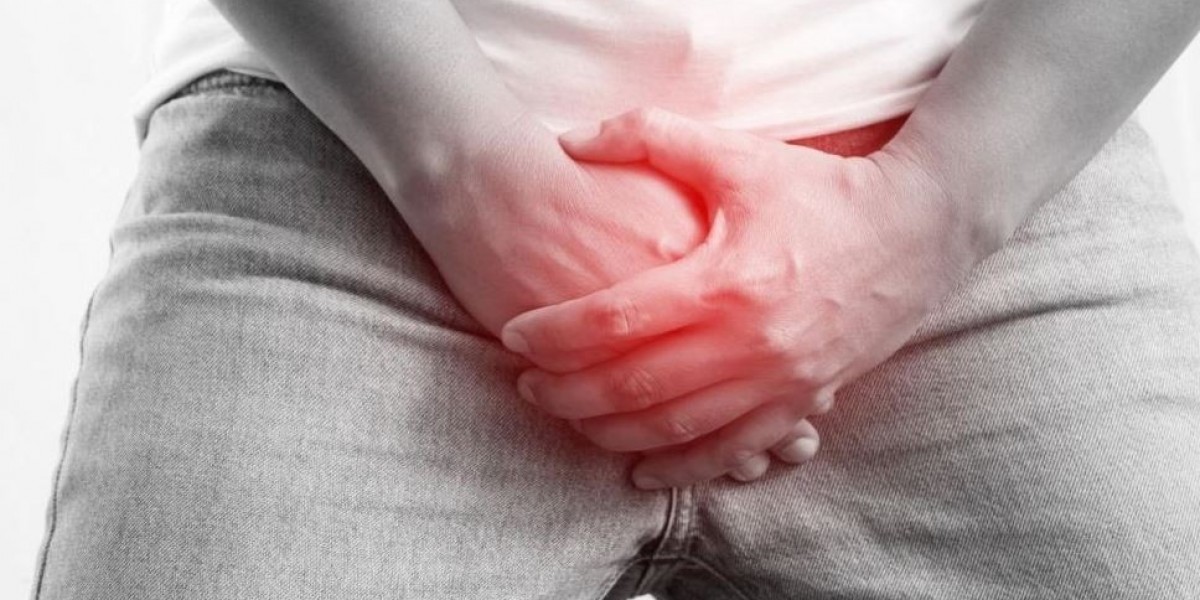A varicocele is one of the most common and treatable causes of male infertility and testicular discomfort. It refers to the enlargement of the veins within the scrotum, similar to varicose veins that appear in the legs. This condition can impair sperm production and function, cause testicular pain, and even lead to shrinkage (atrophy) of the affected testicle if left untreated.
While a varicocele can remain unnoticed for years, it becomes significant when it leads to infertility, chronic pain, or testicular asymmetry. Thankfully, modern medicine now offers safe, effective, and minimally invasive treatments that can correct varicocele and restore normal testicular function.
This detailed article explores every aspect of varicocele — from its causes and symptoms to diagnosis, treatment options, surgical techniques, and long-term recovery.
What Is a Varicocele?
A varicocele is an abnormal dilation and twisting of the veins of the pampiniform plexus, a network of small veins within the spermatic cord that drains blood from the testicles.
Under normal conditions, the one-way valves in these veins allow blood to flow upward, from the scrotum toward the heart. When these valves fail or become weak, blood flows backward and pools in the scrotal veins, leading to increased venous pressure, dilation, and temperature elevation in the scrotum.
Over time, this poor circulation disrupts the cooling mechanism necessary for optimal sperm production and hormone regulation, leading to a decline in male reproductive potential.
Epidemiology and Prevalence
Affects approximately 15% of adult males globally.
Found in up to 40% of men with infertility.
Appears in 35% of men with primary infertility and 80% of men with secondary infertility (those who have fathered a child before).
Most commonly develops during puberty, when testicular blood flow and growth increase.
Anatomical and Physiological Background
The veins of the pampiniform plexus surround the testicular artery and help regulate testicular temperature.
Normal sperm production requires a temperature 2–3°C below core body temperature.
When varicocele forms:
The valves in the spermatic veins fail.
Blood refluxes and accumulates.
Venous pressure and temperature rise.
Testicular tissue and sperm cells become stressed and damaged.
The condition predominantly affects the left side (90% of cases) because:
The left testicular vein drains into the left renal vein at a right angle.
The right testicular vein drains directly into the inferior vena cava, providing a smoother blood flow.
This anatomical difference increases hydrostatic pressure on the left side, predisposing it to varicocele formation.
Types of Varicocele
Varicoceles can be classified by location and severity.
By Location
Left-Sided Varicocele: Most common due to anatomical reasons.
Right-Sided Varicocele: Rare; requires evaluation for secondary causes such as retroperitoneal mass or venous obstruction.
Bilateral Varicocele: Affects both testicles; seen in around 10–15% of cases.
By Clinical Grade
Grade I: Small; palpable only during Valsalva maneuver (straining).
Grade II: Moderate; palpable without straining but not visible.
Grade III: Large; easily visible through the scrotal skin.
Subclinical varicocele (not detectable by examination but visible on ultrasound) can also impact sperm quality.
Causes and Risk Factors
1. Valve Dysfunction
Faulty or absent venous valves are the primary cause. This allows retrograde (backward) blood flow and pooling.
2. Venous Compression
External compression of the renal vein (known as the “nutcracker effect”) can increase pressure in the left testicular vein.
3. Genetic or Congenital Factors
Some individuals inherit weak vein walls or defective venous valves, predisposing them to varicose and varicocele formation.
4. Increased Abdominal Pressure
Chronic coughing, constipation, obesity, or prolonged standing can elevate venous pressure.
5. Secondary Causes (Rare)
In older men, a sudden varicocele, especially on the right side, may indicate a retroperitoneal tumor or renal mass compressing the vein.
Symptoms of Varicocele
Varicoceles can range from asymptomatic to severely uncomfortable. Common symptoms include:
Dull or aching scrotal pain, often worsening with standing, physical activity, or heat.
Heaviness or dragging sensation in the scrotum.
Visible or palpable enlarged veins that resemble a “bag of worms.”
Testicular asymmetry or shrinkage (atrophy) on the affected side.
Fertility problems, such as difficulty conceiving due to poor sperm quality.
Relief from pain when lying down (due to improved venous drainage).
In most cases, symptoms worsen as the day progresses and subside with rest.
Varicocele and Infertility
Varicocele is one of the leading causes of correctable male infertility. It affects sperm production and function through multiple mechanisms:
1. Elevated Scrotal Temperature
Excessive heat damages sperm-producing cells and reduces sperm count and motility.
2. Oxidative Stress
Blood pooling increases oxidative stress and free radical levels, causing sperm DNA fragmentation.
3. Hormonal Changes
Leydig cell dysfunction leads to reduced testosterone production.
4. Hypoxia
Poor circulation reduces oxygen delivery to testicular tissue, impairing function.
5. Testicular Damage
Chronic pressure and stress can lead to irreversible testicular atrophy.
Clinical studies show that varicocele repair can significantly improve semen parameters, testosterone levels, and pregnancy rates in infertile couples.
Diagnosis of Varicocele
A thorough diagnosis involves physical examination and imaging studies.
1. Physical Examination
The urologist examines the scrotum while the patient stands upright. During the Valsalva maneuver, dilated veins become more prominent.
Varicoceles are graded as:
Grade I: Detected only during Valsalva.
Grade II: Palpable without Valsalva.
Grade III: Visible through the skin.
2. Scrotal Ultrasound (Doppler Study)
This non-invasive test confirms the diagnosis and measures vein size.
A vein diameter >3 mm with reversed blood flow indicates varicocele.
3. Semen Analysis
Evaluates sperm concentration, motility, and morphology.
Abnormal results support surgical correction.
4. Hormonal Testing
Measures testosterone, LH, and FSH levels to assess hormonal balance.
5. Imaging for Secondary Causes
CT scan or MRI may be ordered if a right-sided or sudden varicocele appears in older men.
When Is Treatment Required?
Not all varicoceles need intervention. However, treatment becomes essential in cases of:
Pain or discomfort not relieved by conservative measures.
Infertility or abnormal semen analysis.
Testicular atrophy (size reduction).
Hormonal imbalance (low testosterone).
Cosmetic or psychological concerns.
The aim is to block or redirect the abnormal venous flow while preserving arterial supply and lymphatic drainage.
Treatment Options for Varicocele
1. Conservative (Non-Surgical) Management
For small, asymptomatic varicoceles:
Pain management: NSAIDs for occasional discomfort.
Scrotal support: Tight-fitting underwear or athletic supporter.
Lifestyle modifications: Avoid heavy lifting, manage constipation, and reduce standing time.
Cold compress: Reduces swelling and pain.
Monitoring: Regular follow-ups with ultrasound and semen analysis.
However, conservative care does not fix the venous defect — it only manages symptoms.
2. Surgical and Interventional Procedures
A. Microsurgical Varicocelectomy (Gold Standard)
Procedure:
Performed under local or general anesthesia.
A small incision (2–3 cm) is made near the groin.
Using an operating microscope, the surgeon isolates the dilated veins.
These veins are tied off (ligated) while preserving arteries and lymphatics.
Advantages:
Success rate >95%.
Recurrence rate <2%.
Low risk of hydrocele formation.
Minimal pain and scarring.
Quick recovery (return to normal activity in 1 week).
This is currently the most effective and preferred technique worldwide for fertility improvement.
B. Laparoscopic Varicocelectomy
Procedure:
Small keyhole incisions are made in the abdomen.
A laparoscope (camera) and instruments are used to locate and clip the affected veins.
Advantages:
Best for bilateral varicoceles.
Minimally invasive, short hospital stay.
Faster recovery.
Limitations:
Requires general anesthesia.
Slightly higher recurrence rate than microsurgery.
C. Percutaneous Embolization (Minimally Invasive Radiologic Procedure)
Procedure:
Performed by an interventional radiologist under local anesthesia.
A catheter is inserted into a large vein (neck or groin) and guided to the testicular vein.
Small coils or sclerosant are injected to block abnormal veins.
Advantages:
No incision or stitches.
Outpatient procedure.
Fast recovery (1–2 days).
Minimal discomfort.
Limitations:
Slightly higher recurrence (5–10%).
May not be possible in certain anatomical variations.
D. Open Surgical Ligation (Palomo or Ivanissevich Technique)
A traditional but effective method for varicocele correction.
Procedure:
A small incision in the lower abdomen or groin.
The surgeon directly ties off enlarged veins.
Advantages:
Widely available.
Can be done under local anesthesia.
Disadvantages:
Higher recurrence.
Risk of hydrocele formation.
Slower recovery.
Postoperative Care and Recovery
After treatment:
Rest: 2–3 days of rest, gradual return to normal activities within a week.
Avoid: Heavy lifting or strenuous activity for 2–3 weeks.
Supportive wear: Scrotal support to reduce swelling.
Pain relief: NSAIDs or ice packs as needed.
Follow-up: Ultrasound and semen analysis at 3–6 months.
Most men report significant pain relief and improved fertility outcomes within a few months of surgery.
Results and Success Rates
Pain relief: 85–90%
Improved sperm count and motility: 60–80%
Natural conception rate: 40–60% within 6–12 months
Testosterone increase: 80–90% in men with low baseline levels
Recurrence: <2% for microsurgery, 5–10% for embolization
Varicocele repair not only enhances natural fertility but also improves outcomes in assisted reproductive techniques such as IVF and ICSI.
Possible Complications
While rare, possible risks include:
Hydrocele formation (fluid buildup around testicle).
Recurrence (if veins not fully ligated).
Infection or hematoma.
Testicular artery damage (very rare with microsurgery).
Temporary swelling or numbness.
Choosing an experienced urologist or microsurgeon minimizes these risks.
Lifestyle and Prevention Tips
While it’s not always possible to prevent varicocele, men can maintain optimal testicular health by:
Avoiding prolonged standing.
Managing constipation and maintaining a healthy weight.
Wearing supportive underwear.
Exercising regularly to improve circulation.
Eating antioxidant-rich foods (zinc, selenium, vitamin C, E).
Avoiding excessive heat exposure (hot baths, tight pants).
Regular testicular self-examination.
Consulting a urologist for any scrotal changes or pain.
Prognosis and Long-Term Outlook
The prognosis after varicocele treatment is excellent.
Most patients experience:
Relief from pain.
Restoration of testicular size.
Improved sperm function and fertility.
Higher testosterone levels.
Long-term satisfaction with minimal recurrence.
Modern microsurgical and embolization techniques offer near-permanent resolution of the problem, helping men regain reproductive confidence and comfort.
Conclusion
Varicocele is a common, correctable, and treatable condition that can impact male fertility and quality of life. With timely diagnosis and appropriate intervention — whether through microsurgical varicocelectomy, laparoscopic repair, or embolization — men can achieve excellent results, including improved sperm quality, hormonal balance, and relief from pain.
If you are experiencing scrotal discomfort, visible veins, or infertility issues, it is essential to consult a qualified urologist for evaluation. Early detection and expert treatment can restore your reproductive health and prevent long-term complications.








